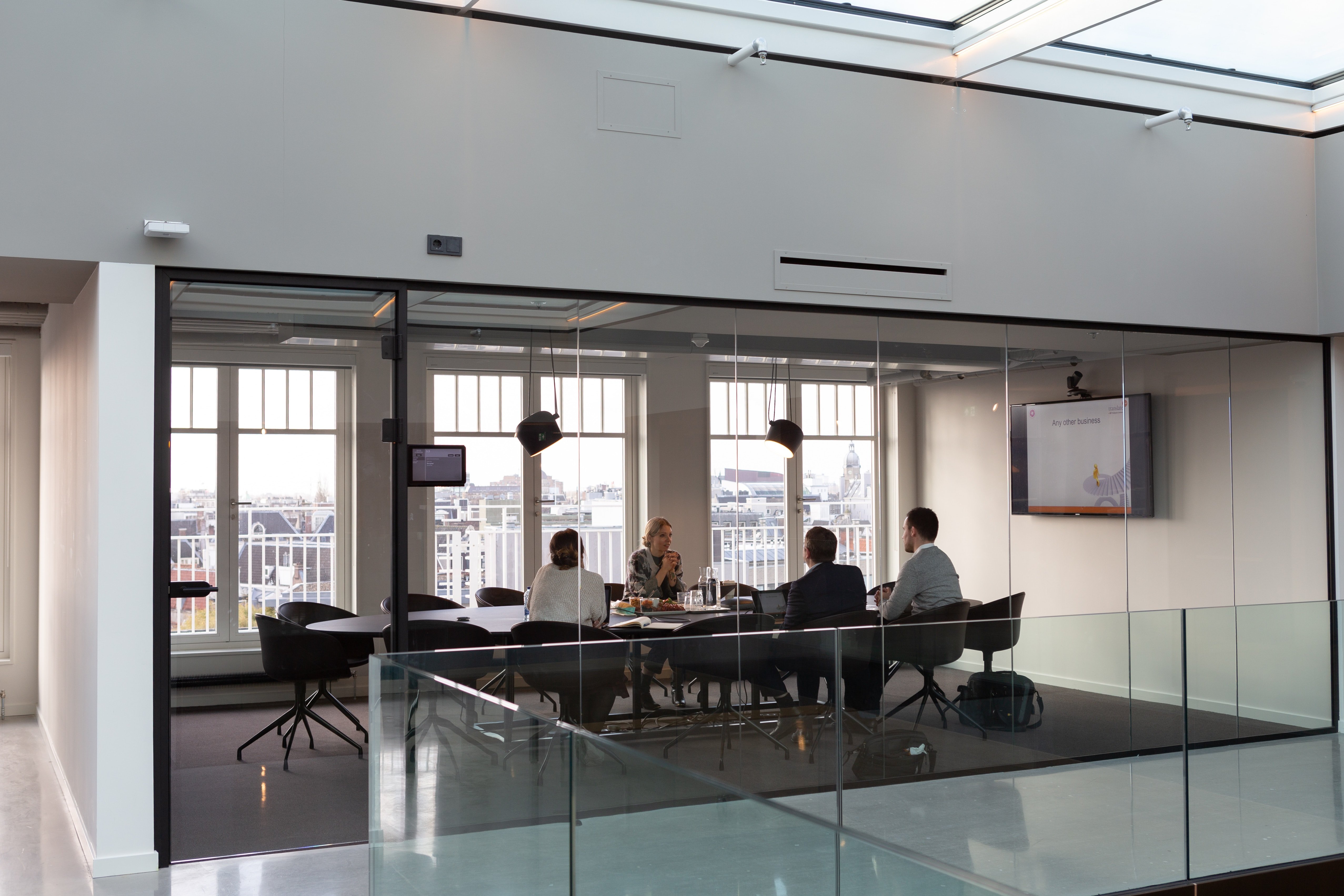CIOs, CTOs, and IT heads, the leaders of modern IT departments, have an important task ahead of them. They need to transform IT from a, by and large, back office service to a significant change enabler in their organizations. This means spearheading a shift from traditional IT tasks to more mission-critical objectives.
Developments in Enterprise Resource Planning (ERP) software, such as cloud-based printing solutions, make it possible for IT departments to grow out of their earlier capacities. And about time!
The IT leader’s new priority is to convert the IT department from a background unit to a strategic task force that delivers emphatic results and drives digitalization. To achieve that, IT teams need to adopt new solutions that frees IT from performing tedious and repetitive tasks, including print management.
As more companies start embracing their digital future, IT departments face rising expectations to serve as business enablers. Resolving end-user complaints is no longer enough; IT is expected to contribute to the organization in a strategic way.
In this article, we explore how IT heads can align their teams around these new priorities with the help of future-ready technology.
IT is Experiencing a Multi-Layered Transformation
Modern IT departments are transforming as we pen these words. Organizations are changing their priorities in IT, and we can see the signs.
The global pandemic helped speed this transition, as remote work placed businesses' digital capabilities under the scanner. Those were hard-learned lessons, and in 2021, a report in The Economist found that 83% of IT decision-makers and business leaders agreed that their organization’s IT infrastructure needed improvement.
Legacy solutions cannot keep up with the growing rate of digitalization in today’s workspaces. New technologies, like artificial intelligence (AI), machine learning (ML), and cloud computing, have upgraded the capabilities of ERP software beyond what we’ve seen in the past.
Switching from on-prem IT solutions to a software-as-a-service (SaaS) model allows teams to automate IT tasks that are repetitive and mundane. This frees them to focus on strategic tasks like promoting digitalization and innovating new business solutions.
Enterprise search solutions, cloud-powered printing, and applied artificial intelligence are just some examples of the kind of technologies that modern IT departments are harnessing. For CTOs and other IT leaders, these technologies offer an opportunity for their departments to grow into the role of business enablers.
The time has come for IT workers to go from the basement to the boardroom, as their evolving role places them in the prime position to transform how their organizations meet their business goals.
The old, service-first ethos of IT departments is giving way to a solution-first mentality. By reducing IT teams’ workload of service-oriented tasks, they can focus on delivering strategic inputs that raise productivity, reduce costs, and improve the experience for employees and customers alike.
What a Modern IT Department Cares About
Any IT professional who watched the brilliant BBC sitcom The IT Crowd will relate to the characters’ abject boredom when faced with repetitive, simple tasks. “Hello, IT… Have you tried turning it off and on again?”.
Made in the early 2000s, the show was a brilliant satire mocking how IT workers were among the most overlooked employees in the office. Other departments only looked to them for menial tasks, like fixing a jammed printer or installing new software, which tied their outcast status.
Even though the show’s jokes have lost none of their bite, its depiction of IT’s place in the office hierarchy has become outdated. With an array of tools at their disposal, IT teams can now automate tasks that would sap their productivity.
Their focus is now on sourcing technological solutions that help their organization achieve strategic goals. A CIO’s or CTO’s mandate must modernize their company’s IT infrastructure through innovation, digitalization, and automation.
To do this, modern IT departments have shifted their priorities to include the following:
👉🏼 #1. Low-Touch, Self-Managed IT Systems
Today, modern IT departments must learn to use automation for their benefit to succeed in the business enabler role. Services that can handle recurring, complicated procedures like printing are the key to freeing up IT resources for strategic, mission-critical work. With as many as 62% of the respondents to Formstack’s State of Workflow Automation Survey saying they use workflow automation tools, it’s clear that low-touch, self-managed SaaS solutions are already popular with IT decision-makers.
👉🏼 #2. Future-Ready Security Mechanisms
Another advantage of low-touch SaaS solutions is that they come with pre-configured, embedded security measures, such as:
- User authentication (on-premises and cloud authentication)
- Role-based access control based on predefined rules
- Zero trust network architecture
- Regulatory compliance
- Monthly, automated software upgrades
With future-proof SaaS tools reducing time spent on risk prevention and mitigation, IT can fulfill its new role as a strategic task force and make time for non-troubleshooting projects.
👉🏼 #3. Cloud Computing Solutions
Hybrid and remote working arrangements have become more common since the pandemic ended. This new paradigm requires technology to enable it, and cloud computing is the answer for managing an IT infrastructure across multiple locations... with ease.
Cloud solutions exhibit versatility, flexibility, durability, and agility in their application to various fast-changing scenarios. A 2021 report from Gartner predicted that 85% of organizations will adopt a cloud-first policy by 2025, and that prediction is well on its way to becoming a reality.
According to Gartner, cloud solutions will be the centerpiece of new digital experiences for future offices. Experts estimate that by 2025, cloud-native platforms (e.g. SAFEQ Cloud) will deploy +95% of new digital workloads.
👉🏼 #4. Applied AI
AI is one of the key enablers of the automated processes that empower a modern IT department. The hype around AI only grew in 2023, and its adoption has been rapid. In 2017, the McKinsey Global Survey on AI found that 20% of its respondents had adopted AI in their business somehow.
Jump forward to 2023, and that figure had risen to more than twice that, with 50% of respondents adopting AI in at least one business area.
Applied AI solutions serve many functions and play many roles in transforming IT departments, such as:
- Reducing human error
- Enhancing user experiences
- Analyzing big data
Modernizing the workplace through innovation and digitalization is the new mission directive for IT departments in the years to come.
How SaaS Helps Transform IT Teams
Now that more organizations rely on digitalization to achieve their business goals, ITs role is changing. Now, IT departments actively play a strategic role and are no longer relegated to a supporting role.
One of the expectations that IT departments serving as business enablers must meet is adding the right SaaS solutions to the company’s tech stack. Adopting new technology solely for the sake of technology can be counterproductive. The IT department should use its expertise to curate a list of SaaS solutions that demonstrably help meet business goals.
The ideal SaaS solution for the modern IT department usually has some, or all, of the following attributes:
- Task automation tool
- Easily accessible
- Device agnostic
- Convenient to set up, configure, and automate
- Enables remote troubleshooting
- Scalable according to the organization’s needs
- Simplifies existing IT infrastructure
- Reduces costs
- Meets security requirements
IT teams lack a simple route to transform their infrastructure, and they can't accomplish it overnight. Choosing the right SaaS solutions is a great place to start and free up the necessary time and resources to make it happen.
IT Becomes a Business Enabler & Strategic Task Force
There’s no good reason for IT departments to sit on the sidelines when modern technology empowers them to make positive contributions. Creating a new, future-ready IT infrastructure for their organization becomes easier when using SaaS solutions. Having access to more advanced ERP software also grants IT departments access to more opportunities to complete strategic tasks.
FAQs on IT as Business Enablers
Q1) What is an Example of IT Serving as a Strategic Task Force?
Take one common IT headache: Print management. The benefits of cloud printing can be found in its ability to revolutionize how an IT department functions. Besides allowing IT to work as business enablers by removing IT overhead from their plate, cloud-based print solutions help companies save costs by reducing the need for hardware and upkeep.
Q2) What Should Modern IT Departments Focus on to Bring About Transformational Change?
In the quest to transform IT, CTOs and other decision-makers must direct their efforts to achieve the following results:
- Cost efficient solutions
- Adding real value (and achieving bigger outcomes)
- Developing converged IT infrastructure
- Developing future-ready cybersecurity measures
Final Points
With the advantages of SaaS solutions and cloud computing plain to see, it’s time to consider enhancing your company’s IT infrastructure and leverage the necessary tools to alleviate the burden on your IT team.
While cloud print solutions can be an ideal option to dial down your IT infrastructure’s level of required commitment, it’s important to first lay the groundwork and analyze how ready your existing IT ecosystem is for a breath of Cloud-fresh air.
Figure out if your team, processes, and tools are ready for a cloud transformation with our fast and easy Cloud Readiness Assessment Quiz.





